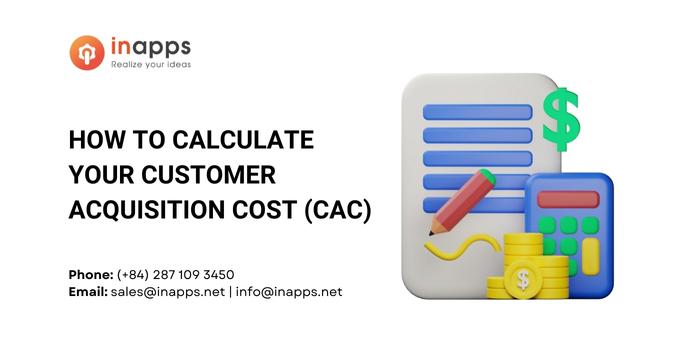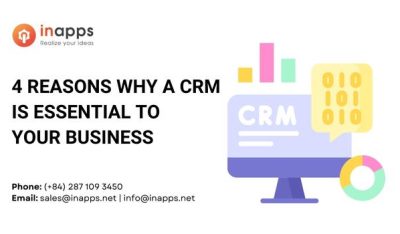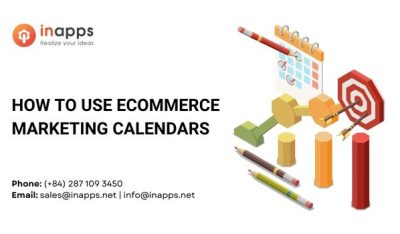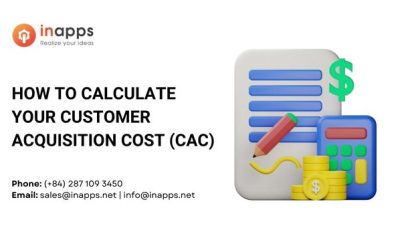- Home
- >
- Ecommerce Marketing
- >
- How to calculate your Customer Acquisition Cost (CAC)
How to calculate your Customer Acquisition Cost (CAC) is an article sent to you by the InApps editorial team. Hope readers will have more useful knowledge at www.inapps.net
I’m sure you know by now that your customer acquisition cost (CAC) is the price you pay to convert a lead into a customer. And for most companies, that’s a pretty huge expense.
According to a 2021 CMO survey, businesses spend over 11.5% of their total company revenue on marketing.
That’s quite a bit on its own, but here’s the thing: marketing is just one piece of your CAC. That means your customer acquisition spend is actually even higher. And that’s where a problem arises. You know CAC is important and that keeping your spend lower than the customer’s lifetime value (LTV) can make or break your growing business.
But surprisingly, you might not know how to actually calculate your CAC.
So that’s what I’ll help you with here today. This post walks you through:
- What goes into calculating your custom acquisition cost?
- How your CAC metric influences your business growth?
- Each step of calculating your CAC (5 steps)
- What is the 2020-2021 cost per acquisition benchmark by marketing channel and industry (slide)
After reading this post, you’ll know exactly what you’re spending to bring on new clients and can make adjustments to improve your CAC to LTV ratio.
Ready to get started? Here we go.
First, determine what goes into your customer acquisition cost?
As I already mentioned above, marketing spend makes up only one part of your CAC.
The P&L sheet for a marketing team has a lot more included than just campaign costs.
And so, to get a full view of how much you spend to acquire new business, you should also include the following in your calculations:
- Cost of product
- Overhead costs for sales and marketing employees (includes taxes, unemployment, etc.)
- Agency cost (ex. Chatter Buzz)
- Cost of conducting research
- Software Spend
- Advertising Spend
Second, determine how should your customer acquisition cost metric influence your business?
If calculated correctly (as I’ll show you in just a moment) your CAC should make your business more profitable.
How?
Here are 3 ways:
#1. By increasing the margin between acquisition cost and lifetime value.
Once you’ve calculated your CAC, that number will always live in direct comparison to your LTV.
And because higher lifetime value means more revenue for your business, your goal should be to expand the ratio in favor of LTV.
David Skok simplified the relationship between these two metrics over on For Entrepreneurs with a basic visual:

(image source)
You want your profits from each customer to far outweigh the cost of initially getting them on board.
#2. By uncovering how long it takes to see ROI from your marketing efforts.
In addition to finding ways to increase margins between CAC and LTV, you’ll be able to see how long it takes a new customer to be profitable for your business.
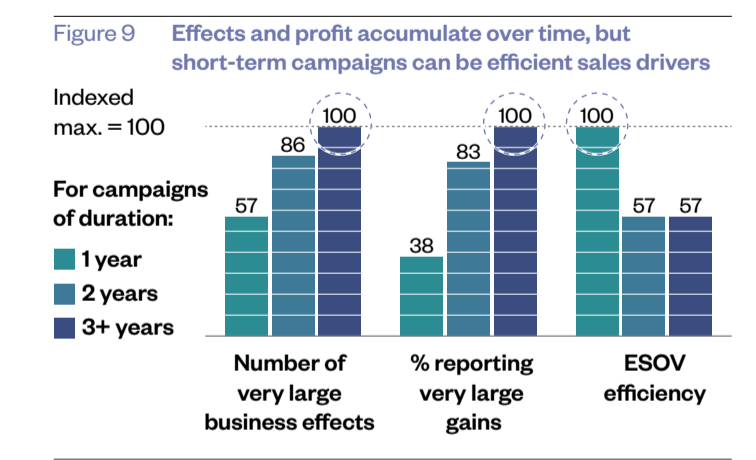
Customer Acquisition Cost are also known as CAC Benchmarks
That’s important because – as Ben Murray shares over on the SaaSCFO blog – CAC Benchmarks have all the qualities of debt for your business.
“You have a balance or principal amount, the amount spent to acquire a new customer, and an interest component. In this case, the interest is the opportunity cost of monies tied up in CAC that could have been spent elsewhere (for example, new product).”
And so here’s where CAC continues to be helpful.
When compared with the LTV, your CAC metric tells you exactly how long it takes to repay that debt.
That way, you’ll know exactly when you can expect to see a return on investment for your marketing efforts.
#3. By enticing and delighting investors.
Investors love to see a high ratio between CAC and LTV. It’s a good indication of how well your business would scale with future investment.
If you’re a startup on the hunt for funding, demonstrating a strong CAC:LTV ratio can be a great way to get investors on board.
5 Steps On How to Calculate your Customer Acquisition Cost by Industry
Now that you know exactly how CAC impacts your business, let’s dive into how you can easily calculate your own spend.
Here’s the basic formula you’ll be working with (courtesy of Ometria):

Formula for Customer Acquisition Cost Benchmarking
If that gives you bad flashbacks to grade school algebra class, don’t worry: I’ll walk you through it step-by-step.
#1. Define the time period you want to measure.
Before you dive into the math, think first about what exactly you want to measure.
Are you interested in the CAC of a specific campaign you’ve ran in the last six months?
Or do you just want to know the cost of acquisition since the very beginning of your business?
As a rule, you should decide on this before gathering all the figures for the equation above. That way, you’re only looking at spend for that particular time period.
#2. Add up all of your sources of acquisition spend.
Most people stop at this step when calculating CAC.
They tally up the costs of their marketing campaigns, compare it relative to their allocated budget, and then file it away.
But as I mentioned before, there’s a lot more that goes into your CAC then just the cost of marketing.
In fact, the entire top line of the equation above makes up all the different variables you should include in your total spend.
That’s why you can’t forget to include the following:

Now, most of those figures are fairly self-explanatory and won’t require much more than a previous invoice to calculate.
But many business owners get tripped up in considering employee wages in calculating CAC.
So to make things clear for you: if you’re calculating your lifetime CAC benchmark (as we are in our example), just plug in the salaries (and cost of benefits) for any employees working directly on lead generation.
Namely, that’s just your sales and marketing teams.
But, if you’re focused on measuring a specific campaign, you’ll need to calculate how much time each employee spent working on that marketing effort and then divide that by their salaries.
#3. Determine how many customers you acquired.
This one is pretty simple: use reporting from your CRM to calculate how many leads converted to customers over the given time.
If you’re looking at lifetime CAC, this should be across all products and services you offer.
Of course, if you’re measuring particular campaigns, only include new customers brought on board as a result of that specific marketing effort.
#4. Take the total acquisition spend and divide it by the number of customers acquired.
Time to bust out those calculators.
Divide your costs by the total number of new clients and there you have it – your customer acquisition cost.
For example, let’s pretend that your company wants to establish the CAC for the last 6 months.
After breaking down your costs, you come up with the following list:
And you acquired 325 customers over that 6 month period.

Using the aforementioned formula, you can establish that your CAC for that campaign was $538.46.
#5. Compare your CAC to your LTV.
Congratulations! You’ve calculated your CAC.
But here’s the thing: knowing your customer acquisition cost is fairly meaningless if you’re not comparing it to the lifetime value.
[Note: The Niel Patel blog has a great infographic on calculating LTV if you’re unsure how.]
You don’t need to be a CFO to know that if your CAC is higher than your LTV (or even equal), that’s a serious problem.
But what’s the right ratio?
You want to see a LTV three times higher than your CAC.

(image source)
A higher ratio than 3x means you could actually be growing faster if you invested in the right channels.
Anything lower than 3x means you need to be exploring these options – provided by David Skok – for either growing your LTV or lowering your CAC:

As an extra bonus, I have also added in this post the 2020-2021’s cost per lead and channel by industry so if you are wondering what your cost per lead should be via pay per click advertising like Google Ads, Facebook Ads and social media marketing then see below.
2020-2021 Paid Advertising and Social Media Marketing Benchmarks per Industry
And That’s It…
Now you know exactly how to calculate your B2B CAC and B2C CAC so that you can immediately evaluate the relationship between your marketing spend and customer lifetime value.
Follow this to make sure you’ve got How to Calculate Your CAC. Save and share with those around you these extras.
To learn more about Ecommerce Marketing
Contact us:
www.inapps.net
List of Keywords users find our article on Google
Let’s create the next big thing together!
Coming together is a beginning. Keeping together is progress. Working together is success.




